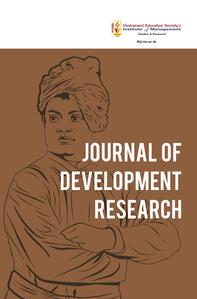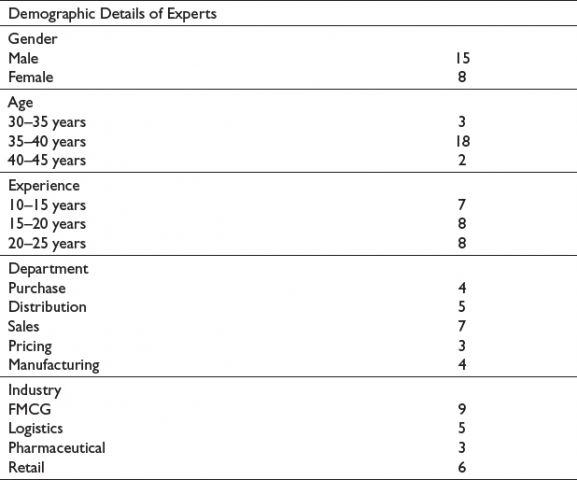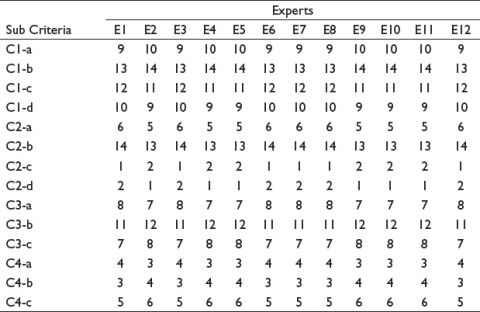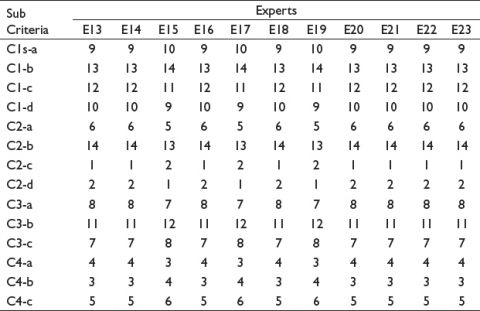
1 N. L. Dalmia Institute of Management Studies and Research, Mira Bhayandar, Maharashtra, India
2 Sheila Raheja School of Business Management and Research, Mumbai, Maharashtra, India
Creative Commons Non Commercial CC BY-NC: This article is distributed under the terms of the Creative Commons Attribution-NonCommercial 4.0 License (http://www. creativecommons.org/licenses/by-nc/4.0/) which permits non-Commercial use, reproduction and distribution of the work without further permission provided the original work is attributed.
COVID-19 has exposed the risks of complex and disconnected supply chain. Many businesses have realised that they need to reach a state of greater visibility and agility across their supply chain. This crisis has forced practical, agile thinking, giving the courage to test, fail fast and try again. Digital transformations that would have taken months or years are being done in a matter of weeks.
In view of the above perspective, this article first studies the various initiatives taken by companies to make their end-to-end supply chain resilient, agile and robust. Then it identifies various factors for a new age technology that are evident for new-normal supply chain management. Using New Rough Stepwise Weight Assessment Ratio Analysis (SWARA) approach, the factors are evaluated for most appropriate factor required for implementation.
New-normal, supply chain management, digital supply network, e-procurement, new age technologies
Introduction
On December 2019, the first case of COVID-19 was found in Wuhan city of China, which subsequently spread across the world by the end of March 2020. The outbreak of coronavirus was a sudden and unexpected incident. Almost the entire world is affected by the working of various industries coming to a halt. Situations such as lockdown, quarantine, mental distraction and job loss are the major outcomes of the pandemic. This has also created a huge burden on medical facilities. Due to job losses, medical facilities are not reaching the lower strata of society. There is a demand–supply mismatch where the demand for certain goods such as face shields and pharmaceutical products is very high but the supply is negligible compared to this demand. On the other hand, there is no demand for goods such as cars, jewellery and shoes but the supply is high. Due to this, the global supply chain (SC) is disturbed. Due to the pandemic, 12,000 facilities of more than 1,000 SC companies are under quarantined areas in China (Ivanov & Dolgui 2020). Manufacturers of SC lack labour to perform production activities, despite ample availability of raw material.
India has faced the worst recession due to the outbreak of coronavirus after the great depression in 1930. The GDP growth rate is 1.9%, which is the lowest recorded figure due to coronavirus. International trade has drastically declined and companies majorly dependent on trades have suffered huge losses.
The two main objectives of any corporate in the current scenario are:
On advice of the World Health Organization, the Government of India announced an unanticipated lockdown, which led to a spike in demand for groceries and fast- moving consumer goods. It was a challenge for the outbound SC to function smoothly as consumers were buying the available products without considering the brand. This forced retail distributors to increase the speed of replenishment, for satisfying the customer demand.
The scenario was opposite in the Inbound SC. Organizations were trying their best to cover up their inventory for a longer lead time. There was a short supply due to the sudden lockdown announced by government authorities. Organisations were looking for alternative resources. Most of the industries were focusing on protecting the businesses until the pandemic got over, by acquiring their supplies either through local or global sources to sustain their business activities.
The key impact of the pandemic on SC planning was to apply different strategies for the forward and backend/backward SC. In the normal conditions, the forward and backend/backward SC were working in congruence.
As we look ahead, there is no ‘one-size-fits-all’ model and companies will have to work closely with their manufacturing, logistics, distribution, marketing and sales department to define their future SC. This is where the need for designing SC for the ‘new normal’ comes into the picture.
Various definitions of supply chain management (SCM) have evolved, thereby making it a very important process. SCM is the management of business processes in organisations that handle SC (Croxton et al., 2001). Traditional SC was linked with purchasing and logistics management but with the advancement over traditional ways of purchasing and logistics, SCM is management of materials and distribution (Tan, 2001). The main role of SCM is to convert raw materials into finished goods and deliver the same to end users in a timely manner (Vincent & Venkataramanan, 2007). The whole of SC majorly consists of retailers, distributors, manufacturers and suppliers who give goods and services to end users and add value to upstream and downstream channels through movement of information and resources. It also aims at improving product or service attractiveness (Machowiak, 2012). For the development of economy, creating a demand and supply balance is very crucial. This is where SCM plays a role. It incorporates supply and demand management inside and across companies (Randall & Mello, 2012). Apart from demand and supply management, it regulates the relationship within the chain of people involved in the process (Min & Mentzer, 2011).
With the widespread of COVID-19 virus, multiple countries all over the world declared health emergency. India developed its first COVID-19 case on 30 January 2020. Various restrictions were imposed, leading to a halt in business processes and affecting the business cycle of almost all organisations.
The coronavirus pandemic showed a huge impact on SC of almost all organisations, which in turn affected the functioning of manufacturers, retailers and wholesalers. Companies were struggling to uphold the sound movement of goods and services during this difficult time. Goods such as frozen food, medicines, masks and grocery items that were in huge demand faced obstacles due to disrupted SC. This led to an interruption in manufacturing, procurement, distribution and supplies. Previously forecasted demand and budgets remained unworkable. Due to the lockdown manufacturing plants were forced to shut down and special permission was required to operate plants manufacturing special goods required during the pandemic. Movement between inter and intra-state was at a halt leading to absenteeism of workforces, less staff at warehouses and shops and interrupted procurement of domestic raw materials. The use of existing infrastructure drastically reduced as it remained unused.
Various literature on ‘lean supply chain’ were developed to enhance the effectiveness of SCM. It is a linking of companies for managing movement of information, products, services and money upstream and downstream also enabling low cost and meeting customer demands (Vitasek et al., 2005). Many companies all over the world implemented this for an efficient SC. The major advantage of lean SCM is reduction in inventory level helping companies to keep their inventory and hence the storage costs low. Due to the pandemic, companies were building up their inventory and in turn faced the disadvantages of lean supply chain (Roy, 2020).
With the pandemic disturbing and disrupting the SCM, many organisations have taken various initiatives to improve the SCM and bring it back on track. Using various literatures, this article has listed the initiatives.
SC has to undergo tremendous change in its way of functioning. The robust implementation of SC can be implemented by the use of new-age technology and drastic ways of processing.
SC’s first and primary element is manufacturing. Laborers play a significant part in the production process in the labor-intensive industry of manufacturing. The demand of the hour is for motivated as well as skilled labour. However, we have noticed a change in labourers’ behaviour recently. Production is not crucial to them. They determine that the product they make is not necessary, so they skip work. Some are influenced by their family’ decision not to go back to work. Traveling might be challenging for certain people because of restrictions and lockdowns.
Instead of sticking to conventional ways of procurement networks, having a digital SC is the way out. Digital supply chain networks are fast. There is continuous flow of information with the supply network and due to its integrated nature and use of analytics, it helps organisations remain connected with all the stages of SC. E-procurement is one of the techniques used nowadays by companies to overcome the problems of manufacturing (Chang et al., 2013). Olig and Spears (2001) mentioned various advantages of it. Electronic procurement or e-procurement, defined in its basic form, is the usage of electronic resources such as the internet and email for buying and selling goods or rendering services (Carayannis & Popescu, 2005). It includes ordering through electronic means, use of portals, extranets and Electronic Data Interchange (EDI) for bidding processes (Dooley & Purchase, 2006); purchasing cards and reverse auctions are also included (Moon, 2005). Connecting multiple organisations electronically to handle the purchasing procedure is the main motive (Dooley & Purchase, 2006).
Electronic sourcing or e-sourcing is the identification of new suppliers over the Internet, including tendering in which requests for prices and related information are sent (Boer et al., 2002).
Further to adding new technologies, Artificial Intelligence (AI) holds space in SCM. It is the ability of machines to communicate with humans and reproduce the capacities of humans (Holsapple & Whinston, 1990). It is helpful in various areas to solve problems, has high accuracy, higher speed and can take large amount of data. Artificial neural network (ANN) which is a variant of AI helps in forecasting techniques (Ketter et al., 2011), used for pricing of products and services (Peterson & Flanagan, 2009) combined with k-means which is used for customer segmentation. Genetic Algorithm (GA) conducts sales promotion and other promotional activities. Taratoukhine and Yadgarova (2018) suggested a technique to handle product life cycle using multi-agent systems (MASs). Lee et al. (2011) suggested a way to handle logistics workflow using AI in combination with radio- frequency identification (RFID). AI is also used to control and suggest improvements in quality of products and services.
Use of robots in SC is now picking up demand. SC integrated with robotics is the future of SCM. With options of relocation due to the pandemic, success in terms of quality and productivity is achieved. The e-commerce giant Amazon in 2012 acquired Kiva systems. The only reason was to increase its pace of picking and packing using robots used by Kiva Systems, though it had to invest heavily for the acquisition. Within two years of the acquisition, Amazon started using automated robots in its various centres. The robots transport goods from one inventory store to another being picked up manually and others being automatically returned to the shelves in the store. In future, robots will be used for truck unloading, collecting orders, inventory examining and transportation of goods. Robots will also be used to deliver goods to customers and customers can track the robots using mobile applications. For a robot failure, there would be a backup robot, and for repairing the broken robot, fixing would be done using cloud where the data are stored.
The concept of blockchain is widely discussed in the SC organisation. It is a database, which can be accessed by a peer-to-peer network. In this, sequential blocks are linked together, for a timely transaction to happen and are secured by a cryptographic key on a network that is verified. Once a component is added, it cannot be changed or altered which makes blockchain a reliable source for past records (Seebacher & Schüritz, 2017). Blockchain is highly beneficial for SCM as it is traceable, trusted and reliable for all members of SC. It can also help in reducing the operational cost by eliminating intermediaries.
Although there is great potential for IoT in SCM, the real business value of IoT in the SC has not yet been fully recognised or thoroughly addressed. According to a survey by Accenture of large global companies with more than 1,000 senior managers, most companies (about 90%) still have difficulty understanding how the IoT can benefit their SC. By linking machines, products, people and SC members, the IoT provides a new environment for supply chain managers. It enables process integration and information communication, allows machine- enabled decision-making and fosters more efficient and effective SCM. In this entirely new business and technology environment, supply chain managers need to innovate their traditional SCM practices and strategies (Li & Li, 2017).
Various other providers of services and models would be created in the upcoming future. The only criteria for them to continue in the market would be the extent to which they can keep up their promises. There can also be a change in the behaviour of competitors. The only way to understand and survive in the changing environment is to do scenario analysis. It implies how to innovate your operations, what model fits the best and what ecosystem the business should have.
New Rough Stepwise Weight Assessment Ratio Analysis (SWARA) (Zavadskas et al., 2018) developed is a relatively new method used to solve problems in various areas. In this method, experts play a major role in evaluation. Using their own expertise, they rank all the criteria with Rank 1 as the most significant and the least significant is given the highest rank. The ranking of the experts is the main component of this method. In addition, this method is easy to apply. The decision-making process using this technique is achieved quickly and accurately. This research is undertaken to assess the factors for a robust SCM post-pandemic situation.
The rankings collected by the experts consist of the first two steps of the method. In the third step, individual responses of the experts are converted into group matrix cj. In the fourth step, the previous matrix is normalised wherein the worst ranked criteria will have the highest value. Also, the first element is equal to one while other elements are found by dividing the elements with the highest value. In the fifth step, all the elements except the first one which has Value 1, must be added with the number 1 and a new matrix ‘kj’ is formed. In the sixth step, the weight matrix in terms of ‘qj’ is recalculated by diving ‘q(j–1)’ with kj retaining value which is the first element. In the seventh and the last step, relative weights of the criteria are obtained.

Literature review explains various factors that are required for a robust and agile SCM. Using the Literature 4 main criteria and 14 sub criteria are identified. They are listed as per the following table and are validated by the experts.
The Rough SWARA calculation is first performed on the 4 main criteria followed by 14 sub criteria. A total of 23 experts were asked to rank the 4 main criteria in the range of 1 to 4, where 1 is the best rank and 4 is the worst rank. The same procedure is followed for 14 sub criteria. The following table describes the ranking by 23 experts where Cj stands for ‘criteria’ and Ej stands for ‘experts’.





Using the steps described above of Rough SWARA, the relative weights matrix of Main Criteria and Sub Criteria are calculated and presented in the following table.

As per the ‘relative weights’, in the above table, of ‘main criteria’, we can find out that ‘digital supply network’ received the high weightage as per experts followed by alignment of IT systems. Work environment and inventory buffering received the least weight.
Looking at ‘relative weights, in the above table, of ‘sub criteria’, C2c that is criteria resembling IOT receives the highest weight followed by C2d which is blockchain. Network robustness and system stability received 3rd and 4th highest weights, respectively. The other criteria received lower weights as mentioned in the above table.
Implications of the Research
The spread of the COVID-19 pandemic has affected large number of companies. The SC cycle has also been affected and new avenues to revive it is necessary.
The study accessing the factors for a new normal SC reveals that use of ‘digital supply network’ is required for reviving the SCM cycle. Companies should re-examine their SC network. To infuse the agility in SC, scalable solutions combined with automation are the key. While going after agility, firms should also consider the cost, as no organisation wants its operational expenses to go up.
Conclusion
Development in technology should be considered the main source of survival in a pandemic-like situation. The focus of the organisation now should be to have a strong digital infrastructure to effectively communicate and manage future challenges.
The current scenario brings up the fact that companies cannot control the demand; therefore, to cope with the ever-changing demand pattern, they have to build flexible SC and production systems.
For accurate planning, precise forecasting is a must, and for precise forecasting, the use of big data and machine learning is a must. Further, firms cannot rely on available metrics, particularly for planning. Undoubtedly, it is time to move to the new metric—net promoter score—to measure the effectiveness of the SC to meet customer expectations.
This is the era where data are available in abundance right from the point of sale to consumer buying behaviour. Data-driven decision-making has enabled the demand planner to take accurate decisions. Tools such as AI and machine learning are aiding the decision-making process by extracting valuable information out of big data. Going forward, SC transformation will play a key role in enhancing the business performance.
The authors received no financial support for the research, authorship and/or publication of this article.
Boer, L. D., Harink, J., & Heijboer, G. (2002). A conceptual model for assessing the impact of electronic procurement. European Journal of Purchasing and Supply Management, 8, 25–33.
Carayannis, E. G. (2005). Profiling a methodology for economic growth and convergence: Learning from the EU e-procurement experience for central and eastern European countries. Technovation, 25, 1–14.
Chang, H. H., Chuan, Y., & Hsu, C. H. (2013). E-procurement and supply chain perfor- mance. Supply Chain Management: An International Journal, 18, 34–51.
Croxton, K. L., Dastugue, S. G., Lambert, D. M., & Rogers, D. (2001). The supply chain management processes. The International Journal of Logistics Management, 12, 13–36.
Dooley, K., & Purchase, S. (2006, March). Factors influencing e-procurement usage.
Journal of Public Procurement, 6, 28–45.
Holsapple, C. W., & Whinston, A. (1990). Business expert systems: Gaining a competitive edge. IEEE Xplore, 3, 249–256.
Ivanov, D., & Dolgui, A. (2020). Viability of intertwined supply networks: Extending the sup- ply chain resilience angles towards survivability. A Position Paper Motivated by COVID- 19 Outbreak. International Journal of Production Research, 58(10), 2904–2915.
Ketter, W., Collins, J., Gini, M., & Gupta, A. (2011). Real-time tactical and strategic sales management for intelligent agents guided by economic regimes. Information Systems Research, 23(4), 1263–1283.
Lee, C., Ho, W., Ho, G. T. S., & Lau, H. (2011). Design and development of logistics work- flow systems for demand management with RFID. Expert Systems with Applications, 38, 5428–5437.
Li, B., & Li, Y. (2017). Internet of things drives Supply Chain Innovation: A research framework. The International Journal of Organizational Innovation, 9(3), 71–92.
Machowiak, W. (2012). Risk management-unappreciated instrument of supply chain man- agement strategy. LogForum, 8(4), 277–285.
Min, S., & Mentzer, J. T. (2011). Developing and measuring supply chain management concepts. Journal of Business Logistics, 25(1), 63–99.
Moon, M. J. (2005). E-procurement management in state governments: Diffusion of e-pro- curement practices and its determinants. Journal of Public Procurement, 5, 54–72.
Olig, E., & Spears, G. (2001). Benefits of Internet-enabled procurement. Hospital Materiel Management Quarterly, 22, 42–46.
Peterson, S. P., & Flanagan, A. B. (2009). Neural Network Hedonic Pricing Models in Mass Real Estate Appraisal. Journal of Real Estate Research, 31, 147–164.
Randall, W. S., & Mello, J. E. (2012). Grounded theory: An Inductive method for sup- ply chain research. International Journal of Physical Distribution & Logistics Management, 42, 863–880.
Roy, V., Bruno, S. S., & Singh, S. (2020). Reactive and proactive pathways to sustain- able apparel supply chains: Manufacturer’s perspective on Stakeholder salience and organizational learning toward responsible management. International Journal of Production Economics, 227(1), 107672.
Seebacher, S., & Schüritz, R. (2017). Blockchain Technology as an Enabler of Service Systems: A Structured Literature Review. International Conference on Exploring Services Science, Springer, Cham. https://doi.org/10.1007/978-3-319-56925-3_2
Tan, K. C. (2001, March). A framework of supply chain management literature. European, Journal of Purchasing & Supply Management, 7, 39–48.
Taratoukhine, V., & Yadgarova, Y. (2018). Towards a socio-inspired multiagent approach for new generation of product life cycle management. Procedia Computer Science, 123, 479–487.
Vincent, A. M., & Venkataramanan, M. A. (2007). Special research focus on supply chain linkages: Challenges for design and management in the 21st century. Decision Sciences, 29, 537–552.
Vitasek, K., Manrodt, K., & Abbott, J. (2005). What makes a lean supply chain. Supply Chain Management Review, 9, 39–45.
Zavadskas, E. K., Stevic, Z., Tanackov, I., & Prentkovskis, O. (2018, March). A novel multicriteria approach – Rough Step-Wise Weight Assessment Ratio Analysis Method (R-SWARA) and its application in logistics. Studies in Informatics and Control, 27, 97–106.